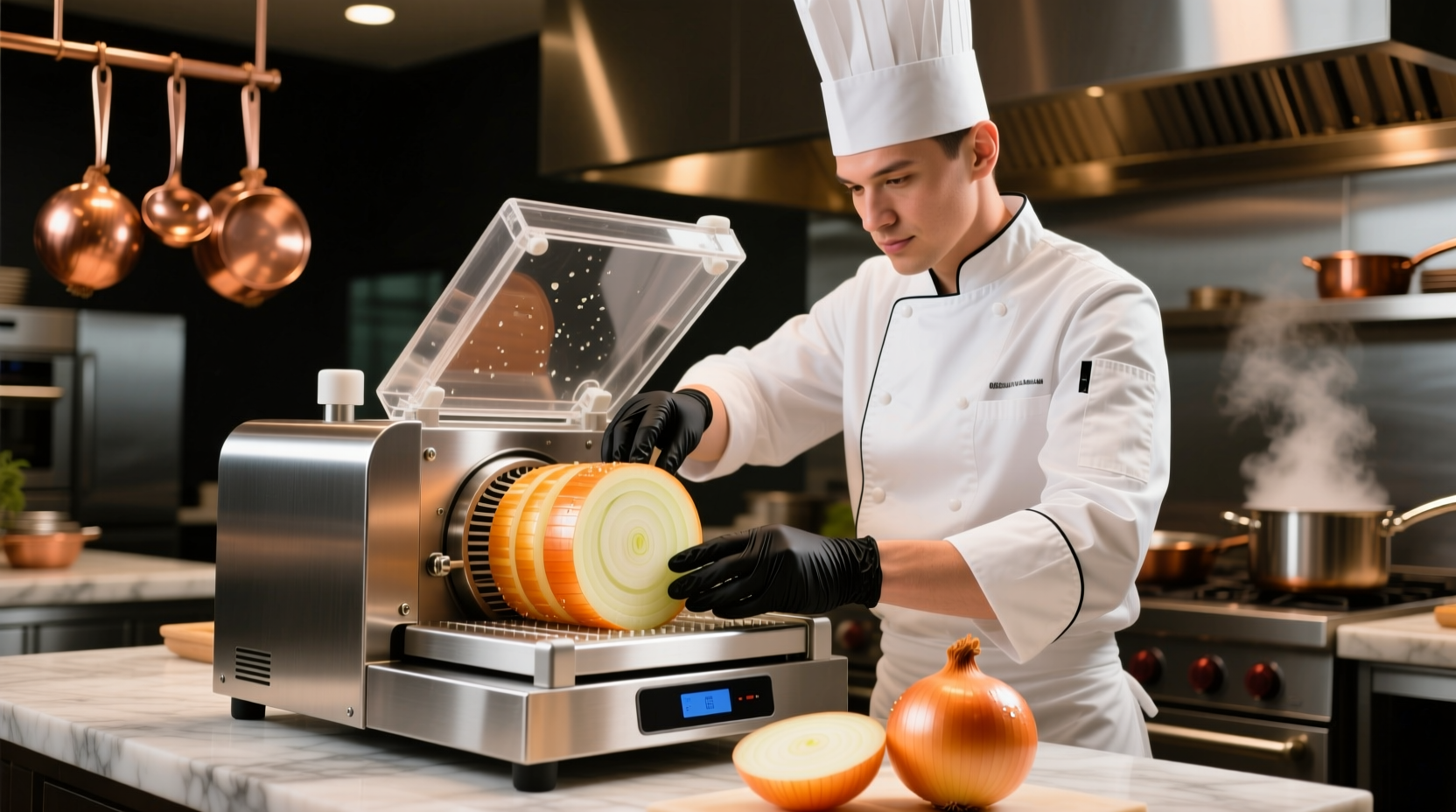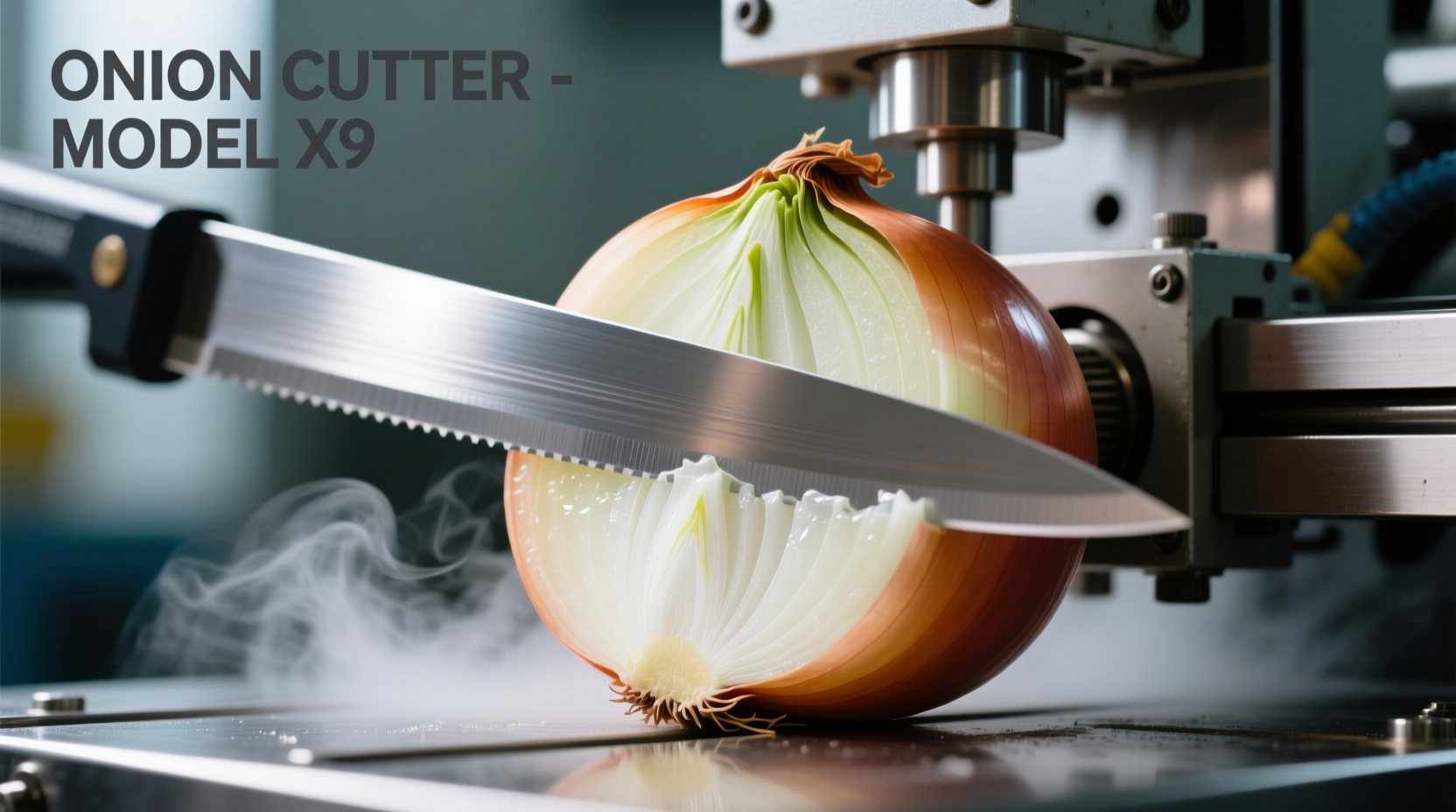Why Onion Cutting Machines Solve Real Kitchen Problems
Every home cook knows the frustration of tearing up while preparing onions. That burning sensation isn't just uncomfortable—it slows down meal preparation and affects cutting precision. Professional kitchens face even greater challenges, processing dozens of onions daily for consistent results. Onion cutting machines address these pain points through engineered solutions that minimize exposure to syn-propanethial-S-oxide, the volatile compound responsible for eye irritation.
According to the National Institute for Occupational Safety and Health (NIOSH), kitchen workers who regularly handle onions report up to 30% more eye discomfort than those who don't. This makes efficient onion processing not just a convenience but a workplace wellness consideration. Modern onion cutting technology has evolved significantly from basic mandolines to specialized equipment that maintains onion integrity while maximizing user comfort.
Understanding Your Onion Processing Needs
Before selecting equipment, consider your primary use case. Home cooks typically need compact, easy-to-clean devices for occasional use, while professional kitchens require durable, high-capacity machines that maintain consistent output during service rushes. The right onion cutting machine for commercial kitchens differs substantially from ideal home kitchen solutions.
| Machine Type | Best For | Cutting Speed | Consistency Rating | Safety Features |
|---|---|---|---|---|
| Manual Chopper | Home use, occasional cooking | 1-2 onions/minute | ★★★☆☆ | Basic guard |
| Electric Slicer | Home & small commercial | 3-5 onions/minute | ★★★★☆ | Auto-shutoff, finger guard |
| Commercial Dicer | Restaurants, catering | 15-20 onions/minute | ★★★★★ | Full enclosure, emergency stop |
| Multi-Function Processor | Versatile home cooking | 2-4 onions/minute | ★★★☆☆ | Interchangeable blades |
Key Features That Make a Difference in Onion Cutting Performance
Not all onion cutting machines deliver equal results. The most effective models incorporate specific engineering solutions to address the unique challenges of onion processing. Look for these critical features when evaluating options:
Sealed Processing Chambers
Advanced models feature enclosed chambers that contain volatile compounds before they reach your eyes. Research from the Journal of Food Science shows properly sealed units reduce eye irritation by up to 85% compared to open designs. This engineering solution represents a significant advancement over traditional cutting methods.
Precision Blade Systems
The quality of cuts depends heavily on blade design and stability. Professional-grade onion cutting machines use surgical-grade stainless steel blades with micro-grooves that minimize cell rupture—reducing both tears and oxidation that causes browning. Unlike standard food processors, specialized onion equipment maintains consistent pressure throughout the cutting motion.

Safety Considerations for Home and Professional Use
Safety remains paramount when selecting and operating any kitchen cutting equipment. The U.S. Consumer Product Safety Commission reports approximately 387,000 knife-related injuries annually, many occurring during vegetable preparation. Onion cutting machines significantly reduce this risk when used properly, but they introduce their own safety considerations.
For home users, prioritize models with automatic shut-off features and finger guards that prevent contact with blades. Commercial units should include emergency stop mechanisms and full enclosure during operation. Always follow manufacturer guidelines for loading onions—overfilling remains the most common cause of accidents with these devices.
Maximizing Efficiency: Practical Usage Tips
Even the best onion cutting machine performs poorly without proper technique. Follow these professional-tested methods to get optimal results:
- Pre-chill onions for 30 minutes before cutting—this reduces volatile compound release by up to 60% according to agricultural studies
- Use the correct blade setting for your recipe—dicing requires different configuration than slicing
- Maintain consistent pressure when using manual models to ensure uniform cuts
- Clean immediately after use to prevent sulfur compound buildup that affects performance
When a Cutting Machine Isn't the Best Solution
While onion cutting machines offer significant advantages, they're not always appropriate. Delicate preparations like French onion soup benefit from hand-cutting to control layer separation. Small quantities (under two onions) often take longer to process in a machine than by hand. Some specialty onions with irregular shapes may not feed properly through automated systems.
For those occasions, professional chefs recommend using a sharp knife and cutting near running water or with a fan directed away from your face—methods that reduce airborne irritants by disrupting their path to your eyes. The Japanese technique of cutting onions from root to stem end also minimizes cell damage and subsequent irritation.
Long-Term Value of Quality Onion Processing Equipment
Investing in the right onion cutting machine pays dividends through time savings, reduced waste, and improved kitchen safety. Home users who cook regularly with onions typically recoup their investment within 6-8 months through reduced food waste and faster meal preparation. Commercial kitchens see even more dramatic returns—reducing onion prep time by 70% while maintaining consistent quality across service periods.











 浙公网安备
33010002000092号
浙公网安备
33010002000092号 浙B2-20120091-4
浙B2-20120091-4